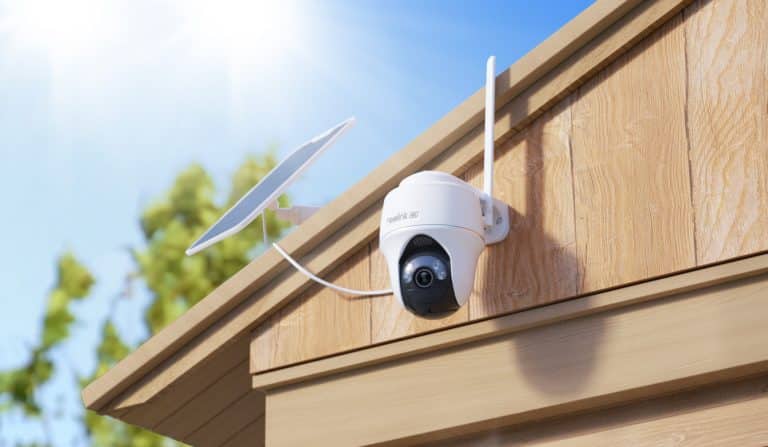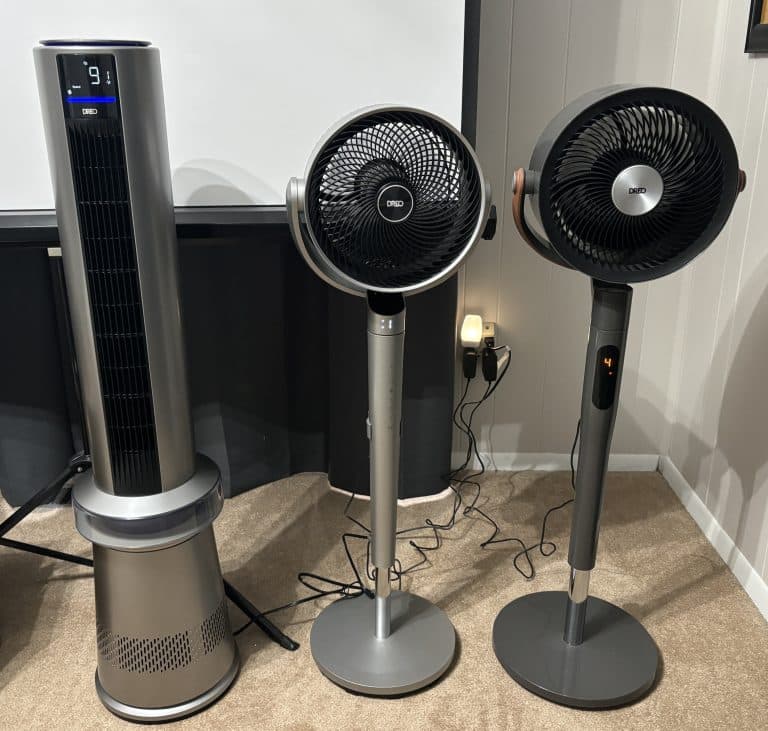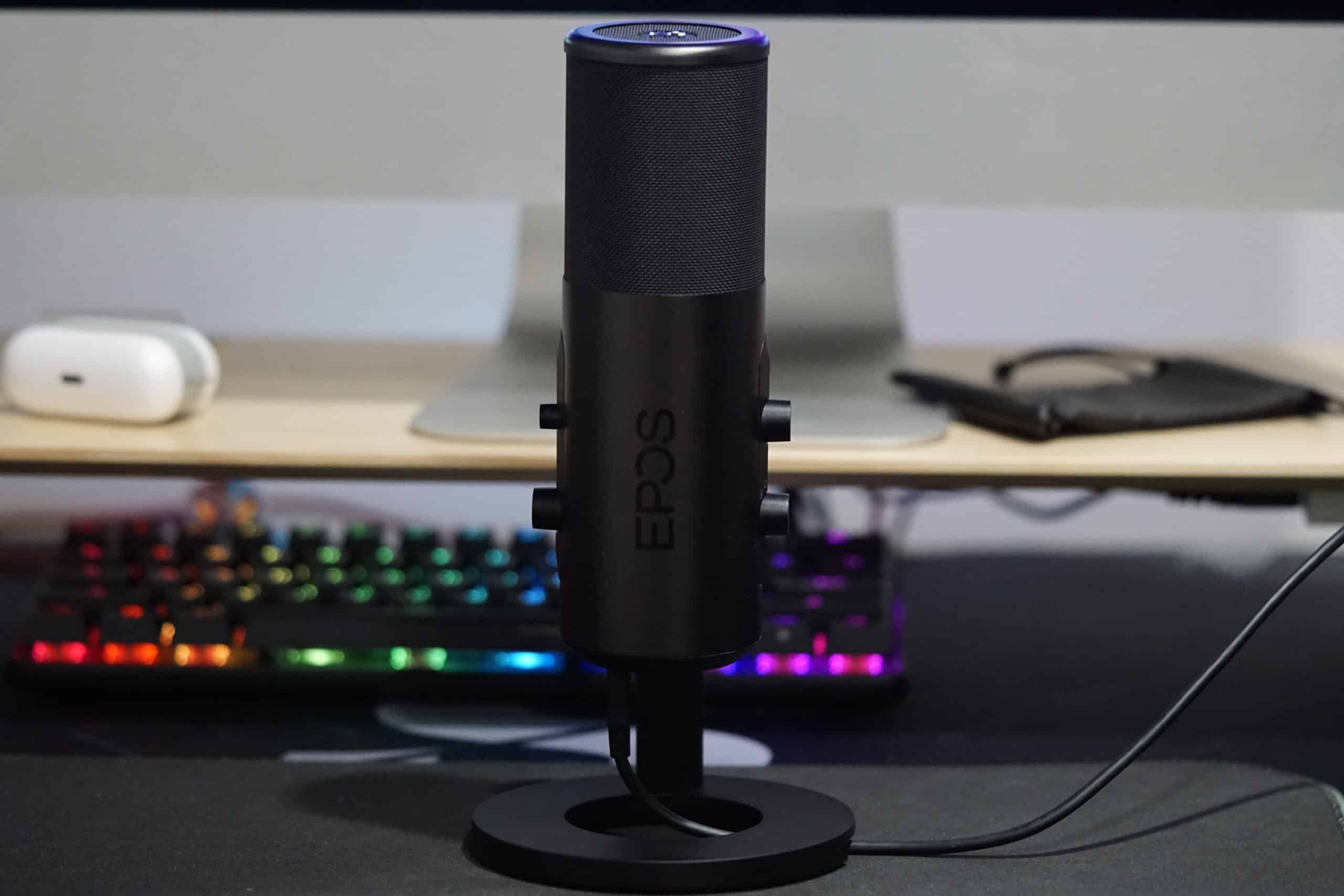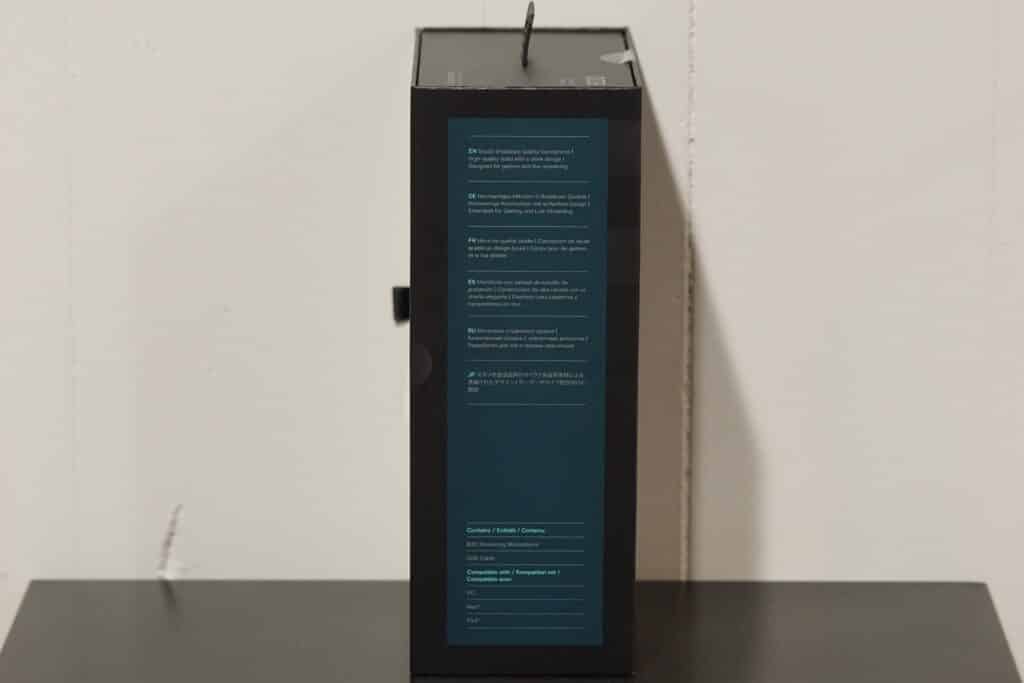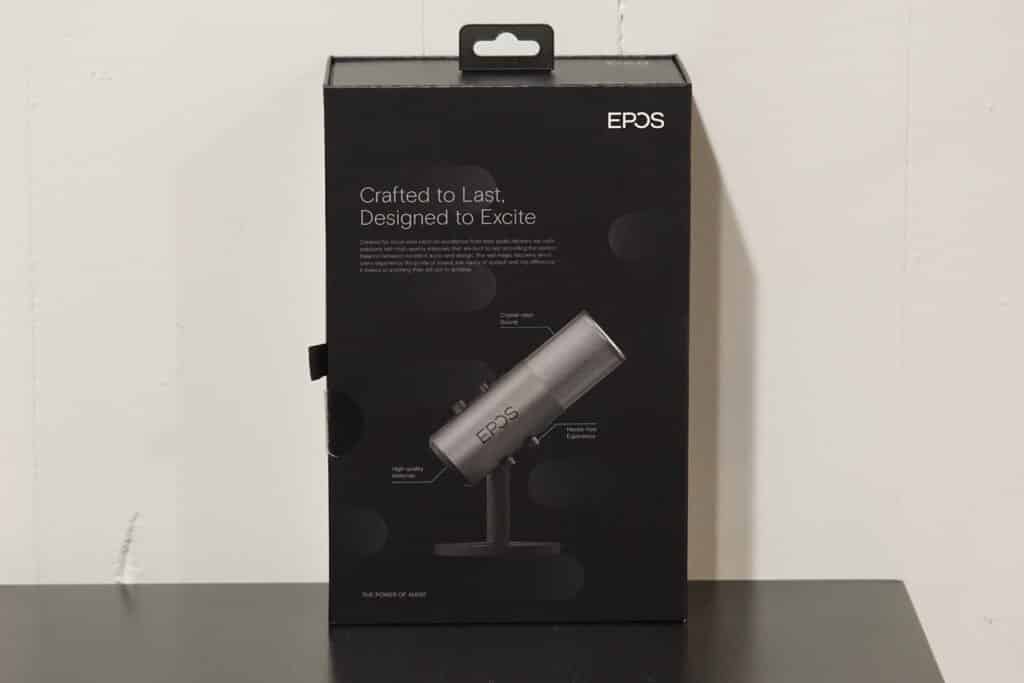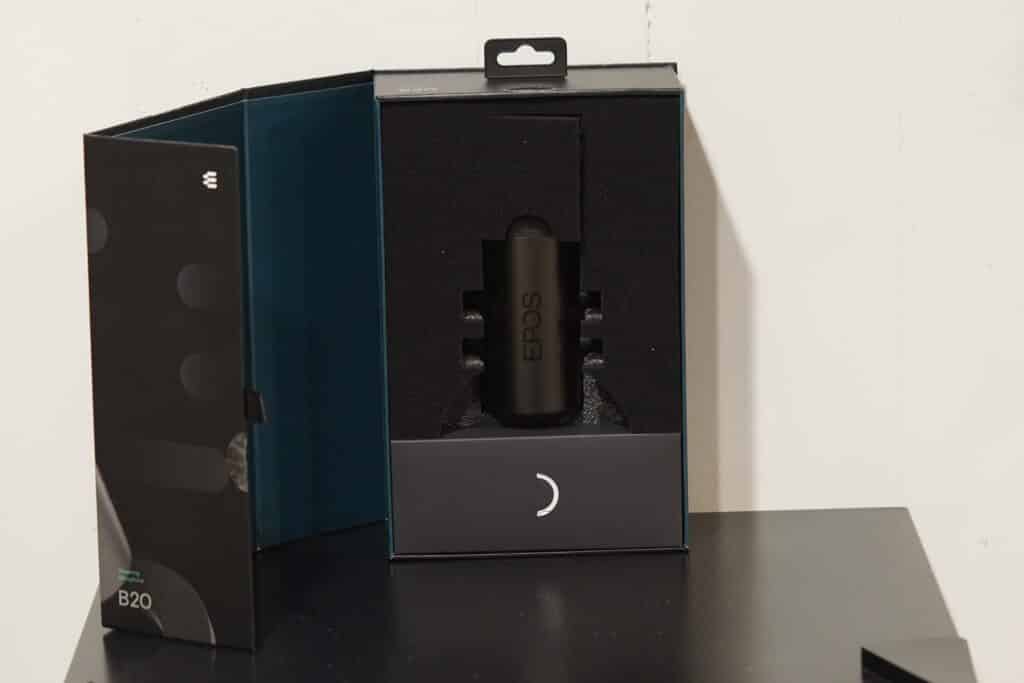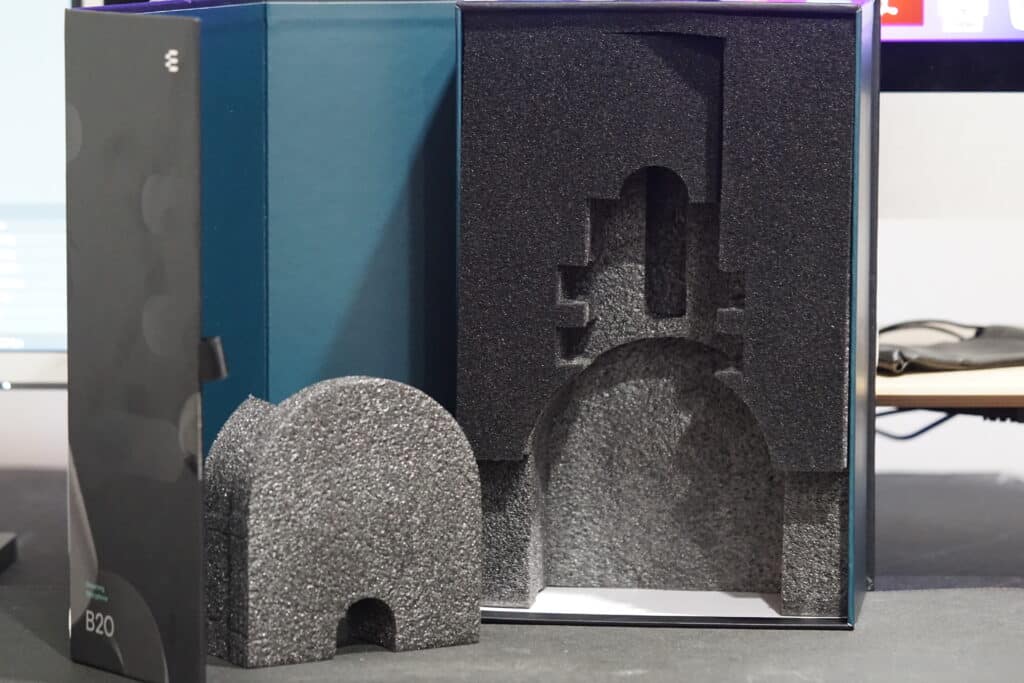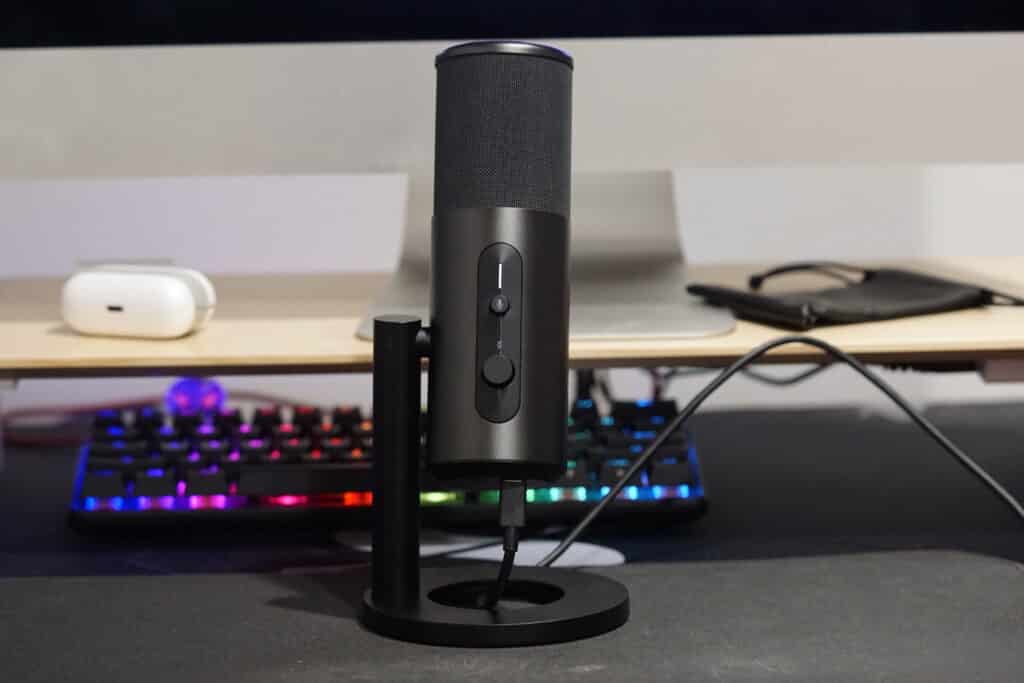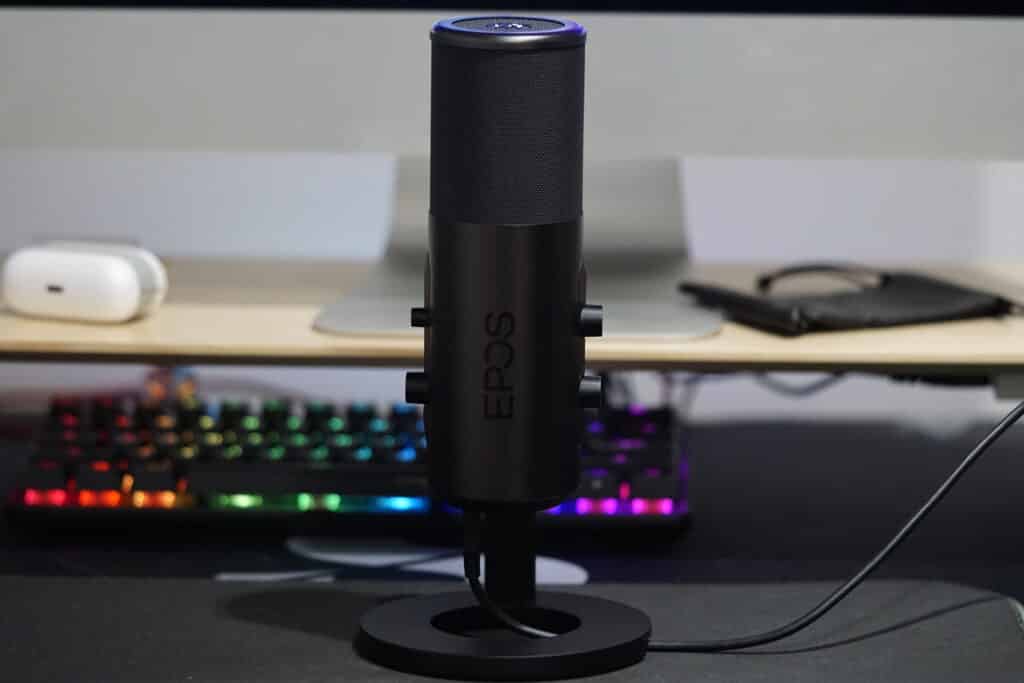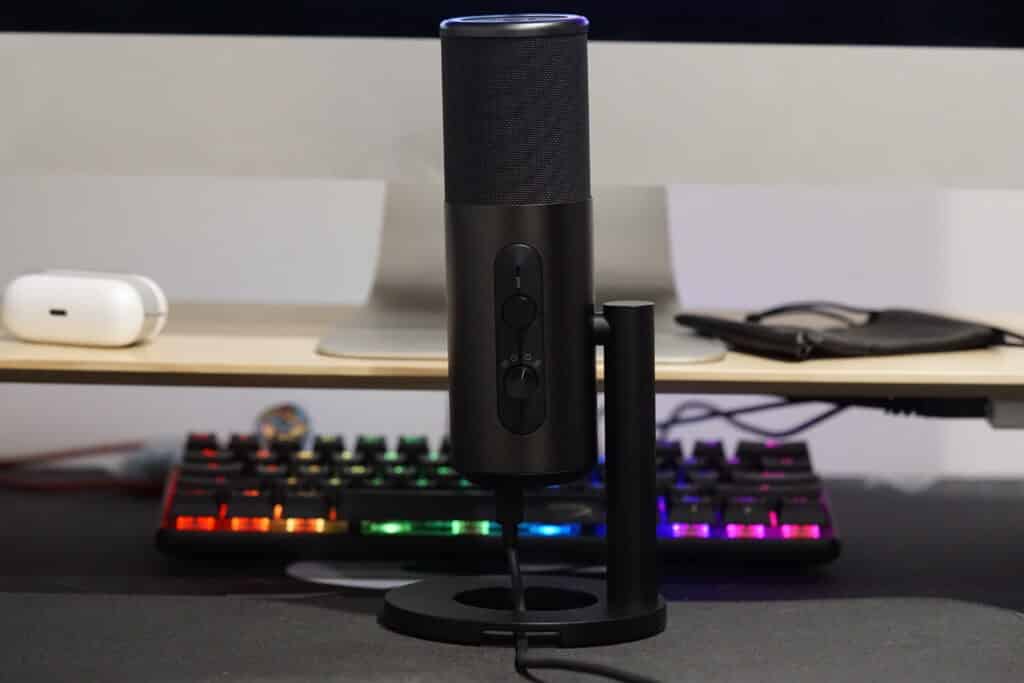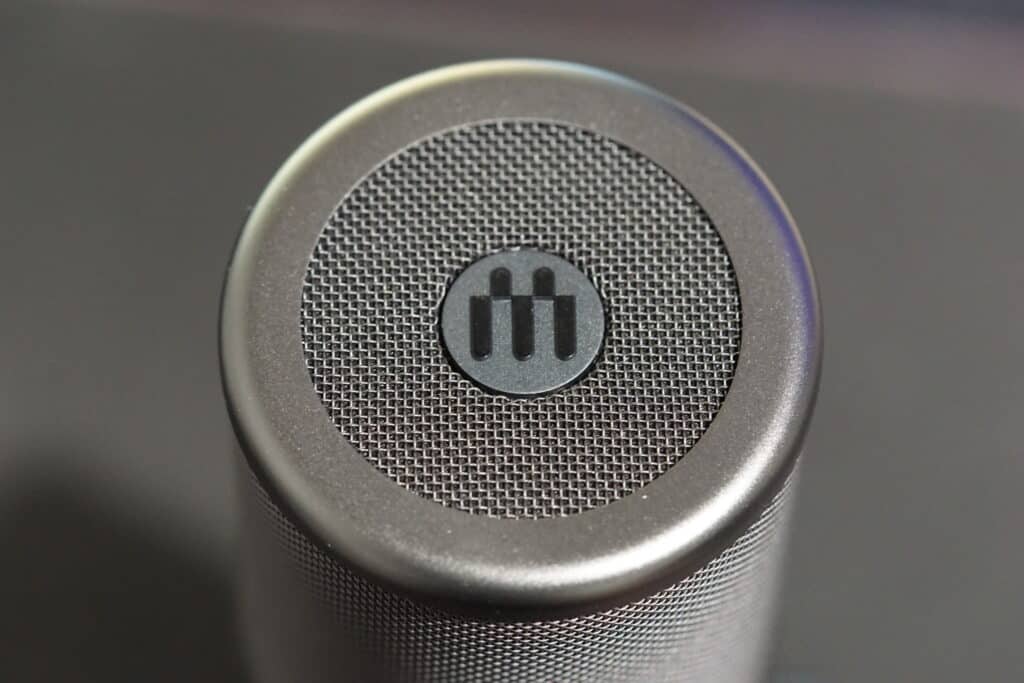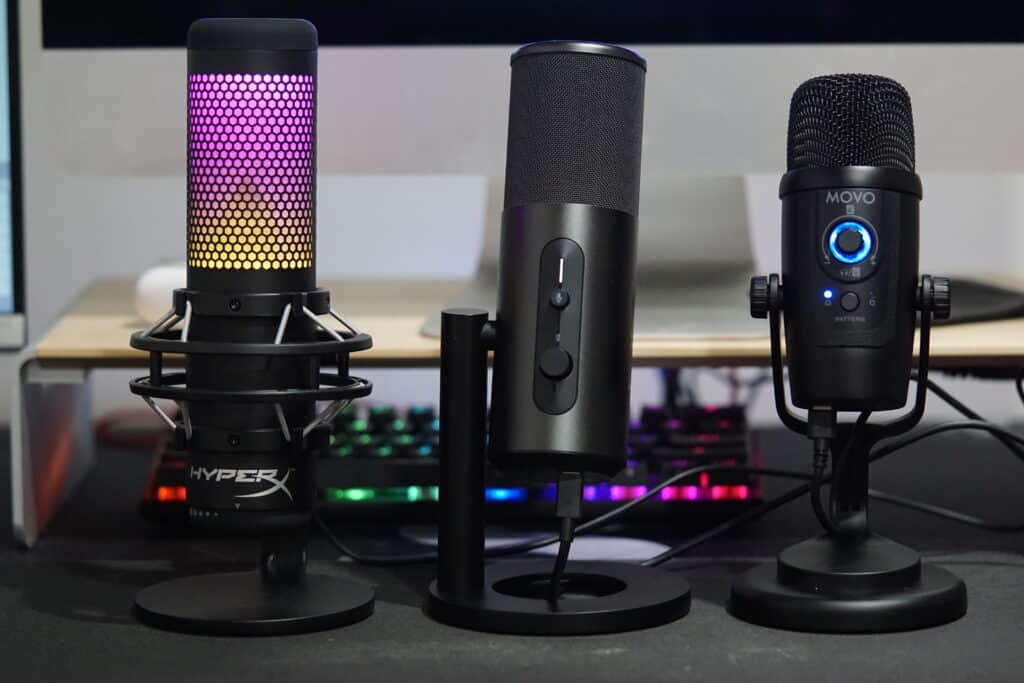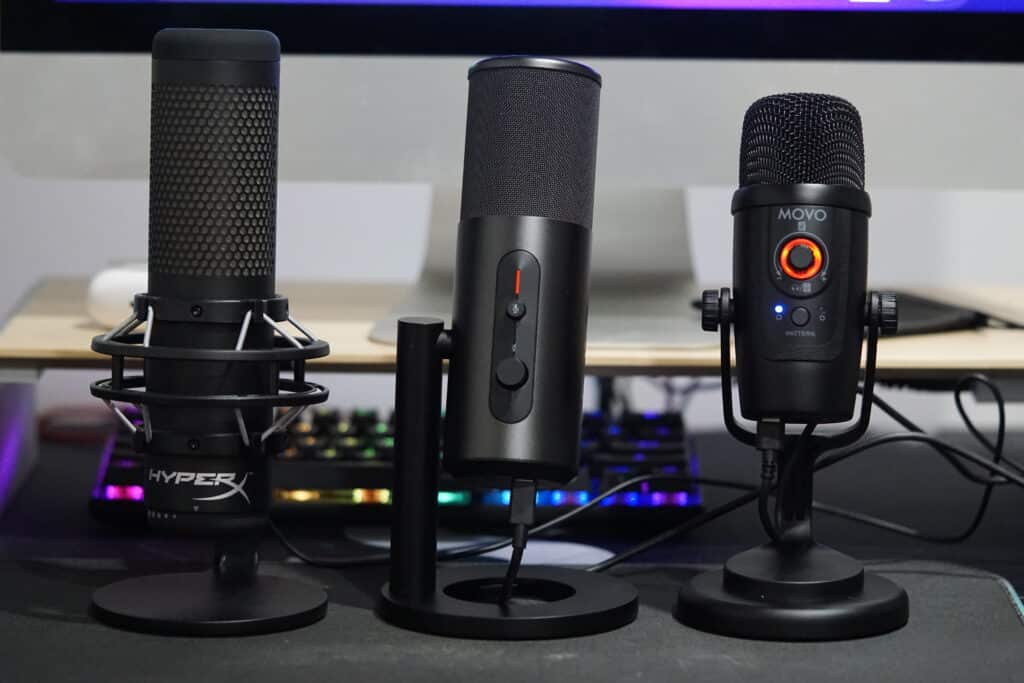I learned a lot when I purchased my first desk and even more when I obtained a different one. Certain products have specific catches and downsides that aren’t always obvious. Sometimes its button placement, the way it looks, size, weight, even optional features go a lot way. With EPOS’ B20 microphone, it absolutely has an appealing image but is it a product that can perform, or is it a really nice desk accessory?
If you’ve read any of my other reviews on an EPOS product, you’d know I like their packaging. This isn’t just because it feels like a premium product at an affordable price, it’s how the companies mission statement can be seen in even the smallest of elements. No product in EPOS’ whole line better encapsulates this than B20’s packaging.
At first glance, it falls in line with their other gamer-centric products. Black box, the off-center image of the product, company logo in the background, limited details, and the companies mission. B20 really avoids the marketing speak by explaining B20 as a crystal clear-sounding microphone made from high-quality materials designed around a hassle-free experience. This isn’t how it’s phrased per se, the three points are explained in three-word statements, but it is the idea they want to convey.
Clearly a Lot of Thought Went Into this Presentation
After opening the magnetic flap, the box opens up to B20 held in place by various types of foam and the accessories positioned neatly on the bottom. It’s clear a lot of thought went into this design and it absolutely shows. It isn’t just the way everything is packaged neatly, it’s small details like the inside of the flap having the EPOS logo and nothing more. Everything is extremely easy to remove and the same holds true for assembly.
Yes, unlike the other microphones I’ve reviewed, B20 needs to be assembled. It’s a quick process, one I didn’t even use a screwdriver for, where you place the base under B20 and screw it in. Shouldn’t take more than five minutes and then you’re a couple of wires from hooking it up. However, before we get into performance, let’s talk about design.
If I am being perfectly honest, a huge part of B20’s appeal is the sleek design. It doesn’t look like a traditional microphone, something that Movo and Blue’s designs invoke, nor does it attempt to stand out like HyperX’s QuadCast line. Instead, it’s very sleek, with minimal information, small design touches, and even a logo that fades into the dark aluminum body.
All Around Elegant Design
Unlike most products I’ve reviewed, B20 can be rather counterintuitive. Contrary to traditional microphones where the front is the one opposite the stand, typically where the logo is, it’s actually the side where the volume and mute indicators are. This is somewhat communicated on the box, with pictures on the website suggesting it in a way that can be misconstrued as positioning it in a way where the logo is visible. The reason I bring this up is due to it having a massive impact on performance and functionality.
When used correctly, players can see whether the microphone is on or off, along with the wires, which have a slot under the stand, feed out the back. When used incorrectly, mute is not viable and wires feed out a single side. In addition to that, this means EPOS is another microphone where polar pattern and gain can be hard to get to. Not a huge deal for polar pattern, as you’ll likely not mess with it too often, though gain can be annoying for some.
Another consideration is the small mute indicator. There is no denying this is something people struggle with, so much so Mute Me appeared on Shark Tank recently to address this very issue, which might be an unintended dealbreaker for some. To give you an idea of how it looks, you can find multiple microphones muted and unmuted below.
Sleek Design Really Stands Out
Once set up, performance is pretty good. During tests, my voice was crisp and clear, with only minimal background noise. More than enough to make nice videos for YouTube, talk to people on Twitch, join in a podcast, or even teleconference with other people. What surprised me the most was how well it picked up on the subtle details in my voice. You can hear slight imperfections rather clearly without it being a detriment to the capture itself. Even when using B20 with others, I got praised for how well it captured anything.
That being said, distance is something to consider. Even at five or so feet, you could clearly tell I was far away from the source. It didn’t hurt the recording, just a subtle effect that was clear as day. And at greater ranges, it gives the illusion of a much larger space than intended. These are unlikely use cases but absolutely considerations.
One annoyance we did run into was related to the volume and gain indicators. In addition to not being marked, meaning you might accidentally go the wrong direction, they seem to reset after use. For example, if I unplugged B20 from my PlayStation 5, I would have to recalibrate it when I reconnected. Some other microphones, such as QuadCast, have a set indicator that will keep the settings I like between uses.
EPOS B20 Review Verdict
In terms of design, I’ve yet to find a nicer-looking microphone. Everything is so sleek and nice looking. This is absolutely something that can go from looking good in any setting, business to even gaming without looking out of place. Some design choices hold it back like it’s hard to see when it’s muted and wires will be clearly visible due to the front positioning. There are ways around these things, which is good since the performance is quite nice, leading to B20 being a good choice if you understand what you’re getting into.
[Editor’s Note: EPOS B20 was provided to us for review purposes.]








